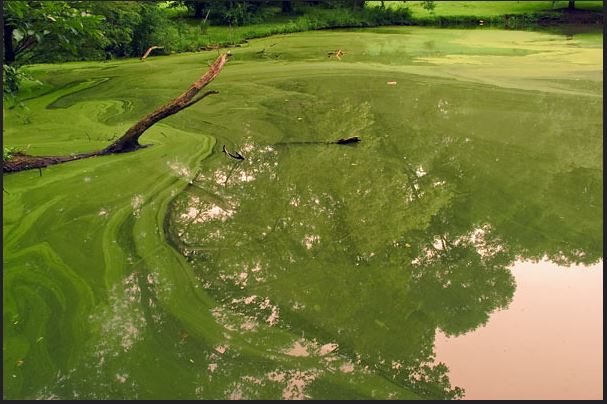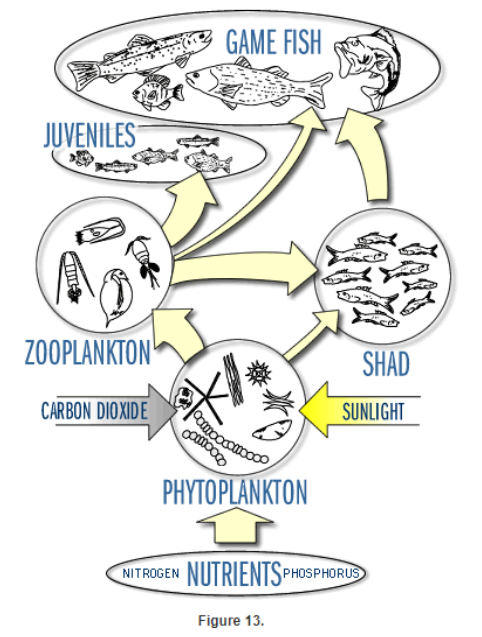News

Harmful Algal Blooms (HABs)

By: Rachael Marques, PCCD Watershed Specialist
A harmful algal bloom (HAB or cyanoHAB) can occur when a naturally occurring cyanobacteria, or blue-green algae, begins to grow out of control in its environment. Some species of cyanobacteria naturally have the potential to create toxins and, when they bloom, the toxins can be released within water bodies. These HABs often are mistaken for green algae which is also naturally occurring but does not produce toxins. The large issues with HABs are that they can lead to fish kills due to low oxygen in the water as well as illness in people and animals due to the toxins produced. It is also possible for cyanotoxins to leech into drinking water sources.
Harmful algal blooms tend to occur in our area in the late summer to early fall when the water is warmer. Their frequency is on the rise nationwide, and this is generally linked to increases of human activities such as point-source discharges and non-point source pollution from stormwater and surface runoff. Climate change is also thought to be a suspect. Additionally, we have all probably experienced walking in a parking lot during the summer heat. When rainwater washes over these areas it can unintentionally cause rainwater to heat up before it reaches a stream. The combined factors listed above lead to the perfect conditions for HABs since cyanobacteria like warm, slow-moving water and extra available nutrients to grow. Several practices may limit the growth of HABs including the installation of riparian buffers which filter excess nutrients in runoff before it reaches local water bodies. Management of non-point source pollution from urban areas as well as from areas with heavy nutrients such as farm fields and over-fertilized lawns can also help prevent these blooms. 
It is important to note that algae and cyanobacteria are naturally occurring and play a critical role in aquatic ecosystems. They play the role of the base of our aquatic food webs, like the one below, and produce more oxygen on planet Earth than trees! Without these cyanobacteria and algae (shown as phytoplankton in the diagram) our aquatic ecosystems would not function. The key is to maintain the natural balance of these aquatic ecosystems through best management practices like those listed in the previous paragraph.
If you suspect there is a HAB in your local waterway, e-mail the Pennsylvania HABs Task Force at HABs@pa.gov and/or report it to your local community manager. Visit the CDC (General Information | Harmful Algal Blooms | CDC)or PA department of Health (HABs (pa.gov)) for additional information regarding the health effects of HABs. When going to water bodies for recreation, keep an eye out for HABs warning signs and advisories. It is best to avoid recreating in bodies of water where a HAB is suspected.
EPA Interactive HABs Map: HABs Web Map (arcgis.com)
Penn State Extension HABs video: https://extension.psu.edu/harmful-algae-blooms-habs
